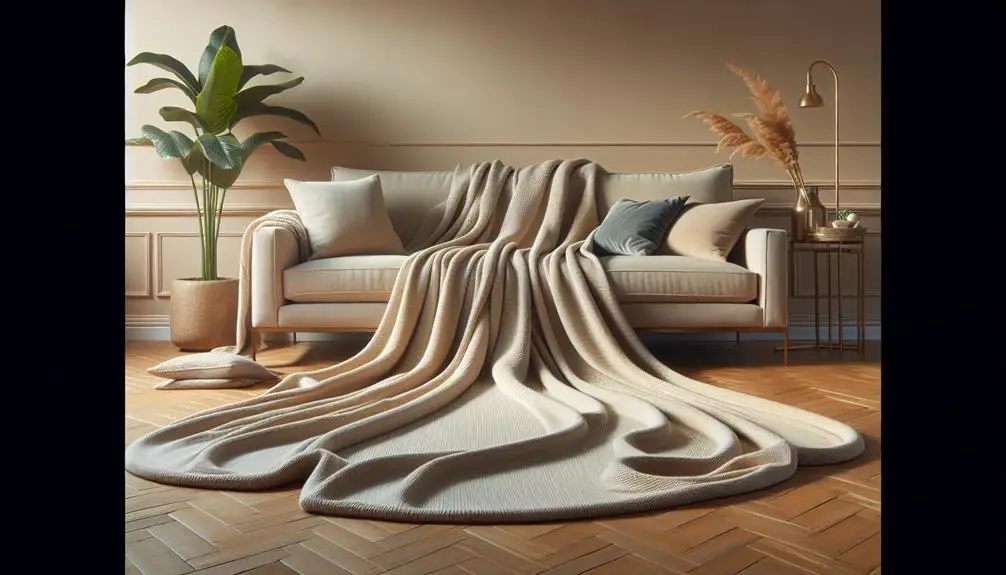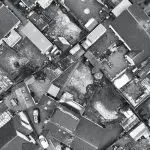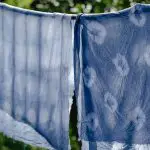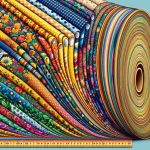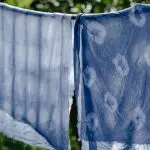When it comes to creating a cozy throw blanket, the question of 'How many yards?' is important. But determining the exact yardage needed can be a bit of a puzzle. Factors such as the size of the blanket, the chosen pattern, and the type of yarn all come into play.
So, how do you navigate through these variables to guarantee you have just the right amount of yarn for your project? Let's unravel this yarn-filled mystery together and discover the key considerations that will lead to a successful blanket-making journey.
Table of Contents
Key Takeaways
- Consider blanket size, yarn weight, and stitch pattern for accurate yardage calculation.
- Match yarn weight and texture to desired warmth and feel of the throw blanket.
- Complex patterns, gauge, and colorwork influence the amount of yarn needed.
- Ensure pattern complexity aligns with available yardage and desired outcome for the throw blanket.
Factors Affecting Yardage Calculation
When estimating the yardage needed for a throw blanket, consider factors like the size of the blanket, the chosen yarn weight, and the desired stitch pattern.
Yarn weight plays a significant role in determining how much yarn is required for your project. Different yarn weights, such as bulky or lightweight options, will impact the overall yardage needed. For example, a blanket made with bulky yarn will require fewer yards compared to one made with a lighter weight yarn due to the thickness of the strands.
Texture variations also come into play when calculating yardage. If you opt for a stitch pattern that creates a denser or more textured fabric, more yarn will be consumed. Conversely, using a more open and airy stitch will result in less yarn usage. Understanding how different textures affect yardage can help you plan accordingly and prevent running out of yarn mid-project.
Standard Throw Blanket Sizes
To understand how much yarn you'll need for a throw blanket, it's helpful to know the standard sizes for these cozy additions to your home decor. Throw blankets come in various sizes to suit different needs and preferences. Here are some common sizes you might encounter:
- Small Throw Blanket: A smaller size perfect for draping over your legs or shoulders while sitting on the couch.
- Medium Throw Blanket: This size is great for snuggling alone or sharing with a loved one.
- Large Throw Blanket: A more generous size that can cover a single bed or be shared by multiple people.
- Oversized Throw Blanket: For those who love extra coziness, this size offers ample coverage for larger furniture or taller individuals.
- Custom-sized Throw Blanket: Tailored to fit your specific requirements, allowing you to choose the dimensions that best suit your needs.
When considering blanket sizes, materials play an important role in determining the overall feel and warmth of the throw. Additionally, color options and customization can add a personal touch to complement your home decor style.
Calculating Yardage for Different Patterns
When choosing how much yarn to get for a project, the complexity of the pattern plays a significant role in determining the yardage needed. Additionally, the gauge you knit or crochet at will also influence how many yards you'll require for your throw blanket.
These factors are key in accurately calculating the amount of yarn necessary for your specific project.
Pattern Complexity Affects Yardage
Understanding how different patterns impact the required yardage is essential for accurately calculating the amount of material needed for a throw blanket. When considering pattern complexity, factors like yarn weight and drape play a vital role in determining the yardage required. Additionally, patterns involving colorwork may have yardage restrictions due to the increased amount of yarn needed for each color change.
Here are some key points to take into account when calculating yardage for different patterns:
- Yarn weight and drape affect how much yarn is necessary.
- Colorwork patterns often require more yardage than single-color designs.
- Intricate stitch patterns can require extra yarn due to increased stitch complexity.
- Patterns with large motifs may consume more yarn compared to smaller, repetitive designs.
- Textured patterns like cables or lace can impact yardage due to the nature of the stitches used.
Gauge Influences Yardage Needed
Considering the impact of gauge on yardage requirements for different patterns is key to accurately estimating the amount of material needed for a throw blanket. When determining yardage, factors like yarn weight, tension, swatch size, and needle size play vital roles. To give you a better idea, here's a table showcasing how these variables can affect the yardage needed for a 40'x60' throw blanket:
| Yarn Weight | Tension | Swatch Size | Needle Size | Yardage Needed |
|---|---|---|---|---|
| Worsted | Tight | 4'x4' | 6mm | 1500 yards |
| DK | Loose | 5'x5' | 4mm | 1200 yards |
| Bulky | Medium | 6'x6' | 8mm | 1800 yards |
Understanding Yarn Weight and Yardage
As I plunge into the world of yarn crafting, the importance of understanding yarn weight and yardage becomes evident from the start. When working on a project like a throw blanket, grasping these concepts is essential for a successful outcome. Here are some key points to think about:
- Yarn Thickness: Different yarn weights impact the yardage needed for a project. Bulky yarn will require less yardage compared to fingering weight yarn for the same size blanket.
- Yardage Estimation: Calculating the total yardage required involves taking into account the pattern's instructions and your desired dimensions. This estimation helps in purchasing the right amount of yarn.
- Color Selection: Variegated or multicolored yarns may require more yardage due to color changes affecting yarn usage differently.
- Yardage Requirements: Patterns often specify the exact yardage needed based on the yarn weight and size of the project. Following these guidelines ensures you have ample yarn for your throw blanket.
Understanding these aspects will empower you to make informed decisions when selecting yarn for your projects.
Adjusting Yardage for Texture and Stitch
For a more textured throw blanket, adjusting the yardage becomes important to accommodate the additional yarn needed for intricate stitches. When working with texture variations and stitch combinations, it's crucial to bear in mind that these elements can impact the overall yarn usage. Thicker stitches or complex patterns like cables may necessitate more yarn compared to simpler stitches like stockinette or garter stitch.
Texture plays a crucial role in the overall look and feel of a throw blanket. Different textures, such as bobbles, cables, or lace, can add depth and interest to your project but often require more yarn due to their three-dimensional nature. Additionally, certain stitch combinations, like popcorn stitches or clusters, can be yarn-intensive, prompting you to adjust your yardage accordingly.
To make sure you have enough yarn for your textured throw blanket, contemplate swatching your chosen stitch patterns to gauge how much yarn they consume per inch. This practice allows you to make accurate calculations and prevent running out of yarn mid-project, ensuring a beautifully textured blanket from start to finish.
Estimating Yardage for Color Changes
To confirm you have ample yarn for your color changes in a throw blanket, it's important to factor in the additional yardage required for each new hue. When estimating yardage for color changes, consider the following:
- Color blending techniques: Incorporating techniques like color blocks, stripes, or ombre effects will require extra yarn for each shift.
- Estimating yardage: Calculate the amount of yarn needed for each color change based on the stitch pattern and the width of the color section.
- Variegated yarn effects: If using variegated yarn, plan for potential color pooling or abrupt color adjustments that may affect the overall yardage required.
- Yardage estimation: Use a swatch to test how much yarn is used per color change to better estimate the total yardage needed for the project.
- Pattern requirements: Check the pattern instructions for guidance on color changes and yardage specifications to make you have enough yarn for the entire project.
Tips for Buying Yarn for Your Project
When starting a new project, I find it helpful to ponder these practical tips for purchasing the right yarn. Yarn weight considerations play an important role in determining the look and feel of your finished piece. For projects like blankets or scarves, a medium-weight yarn (worsted weight) is a popular choice due to its versatility and ease of use. However, for delicate items like lacy shawls, a lightweight yarn such as lace weight might be more suitable.
Color options for projects are another essential aspect to think about when buying yarn. Think about the color scheme you want to achieve and whether you prefer solid colors, variegated yarns, or gradients. For beginners, working with solid colors can be easier to manage, while more experienced crafters might enjoy the challenge of incorporating different color variations into their projects.
Converting Yards to Skeins
Converting yards to skeins can be a fundamental process once you understand the basic calculations involved. When working with different yarn weights, it's important to know how to convert between yards and skeins effectively.
Here are some key points to take into account:
- Yarn Weight Conversion: Different yarn weights have varying yardage per skein. Understanding the weight of your yarn is vital when converting between yards and skeins.
- Skeins to Yardage Conversion: To convert skeins to yardage, you need to know the yardage in each skein of yarn you're using for your project.
- Calculate Total Yardage: Multiply the number of skeins required for your project by the yardage per skein to determine the total yardage needed.
- Check Pattern Requirements: Always refer to your pattern for specific yardage requirements to make sure you have enough yarn for your project.
- Consider Extra Skeins: It's a good idea to have additional skeins on hand to avoid running out of yarn mid-project.
Understanding these conversions will help you accurately estimate the amount of yarn needed for your crochet projects.
Yardage for Different Crochet Stitches
Moving from calculating yardage based on yarn weight to estimating yarn needs for specific crochet stitches shifts the focus to understanding how different stitches consume varying amounts of yarn. When pondering yardage for different crochet stitches, two key factors come into play: yarn weight and stitch tension.
The yarn weight you choose will have a major impact on the yardage required. Thicker yarn weights like chunky or bulky will use more yarn compared to finer weights like sport or fingering. Additionally, the tightness or looseness of your stitches, known as stitch tension, also affects yardage. Tighter stitches generally use more yarn than looser ones.
To accurately estimate yardage for different crochet stitches, it's important to take these factors into account and maybe even create a small sample square to gauge how much yarn a particular stitch consumes. By mastering the relationship between yarn weight, stitch tension, and stitch type, you can confidently plan your projects and make sure you have ample yarn to bring your crochet creations to life.
Yardage for Different Knitting Stitches
Exploring different knitting stitches reveals how varying stitch patterns impact the amount of yardage needed for a project. When considering the yardage for different knitting stitches, several factors come into play, influencing the overall amount of yarn required. Here are some key points to keep in mind:
- Yarn Weight: The weight of the yarn used greatly affects the yardage needed. Thicker yarn weights like bulky or super bulky will require more yardage compared to finer weights such as lace or fingering.
- Stitch Complexity: More intricate stitch patterns, like cables or lacework, often require more yarn than simpler stitches like garter or stockinette.
- Tension: Your knitting tension can impact the amount of yarn used. Looser knitters may require more yardage than tighter knitters.
- Color Selection: Variegated or multicolored yarns can create unique effects but may require more yardage than solid colors due to color changes.
- Swatching: Always swatch before starting a project to determine your gauge accurately, helping you estimate the correct yardage needed.
Understanding how these factors interplay will empower you to choose the right amount of yarn for your knitting projects effectively.
Frequently Asked Questions
Can I Use Different Yarn Weights for My Throw Blanket?
Absolutely, I mix yarn weights for unique textures in my throw blankets. Experimenting with color combinations adds depth. Be creative with blanket patterns, crochet techniques. Different weights offer variety and character to each project.
How Do I Determine the Yardage Needed if I Want to Make My Throw Blanket Larger or Smaller?
Determining yardage for a throw blanket involves considering size variations. To adjust for larger or smaller blankets, calculate yardage based on chosen color options and desired dimensions. With multiple color options, creativity in design enhances the personalized touch.
Is It Possible to Mix Different Types of Yarn Within the Same Project?
Absolutely, you can mix different yarns in a project. It adds depth with varied colors and textures. Be mindful of fiber content and thickness to guarantee a cohesive look. Experiment, have fun, and create!
How Do I Calculate Yardage if I Want to Add Fringe to My Throw Blanket?
When calculating fringe yardage, I consider the number of strands, desired length, and type of yarn. Choosing colors that complement the blanket enhances the overall look. It's fun to experiment with textures and lengths for a unique touch.
Are There Any Specific Recommendations for Yarn Brands or Types That Work Best for Throw Blankets?
For throw blankets, I find that chunky yarn textures like wool blends or soft acrylics work best. Experiment with color combinations that complement your decor. Brands like Lion Brand Wool-Ease Thick & Quick or Bernat Blanket Yarn are reliable choices.
- Why Is Red Velvet Not Red? - April 25, 2024
- How Do You Describe Velvet Fabric? - April 25, 2024
- How Strong Is Velvet? - April 25, 2024

